VICE ADMIRAL SIR JOHN TREMAYNE RODD KCB (1769-1838) ... and his namesakes |
||||||||||||||||||||
The stories of three men named John Rodd born in the period of 1769 to 1781 have become confused in recent years as family trees have been published on the internet. This page attempts to tell their stories and unravel the confusion. These three people were:
|
||||||||||||||||||||
Vice Admiral Sir John Tremayne Rodd KCB |
|
John Tremayne Rodd was born at Trebartha Hall and baptised in St Torney's Church on the 10th December 1768; the parish register entry is shown here, (click for a larger image). He was the fourth child of Francis Rodd and Jane (née Hearle) and was named 'John' after Jane's father and 'Tremayne' after Jane's brother-in-law, the Reverend Henry Hawkins Tremayne. Francis and Jane's first child was named Bridget but she died in infancy. The second child was named Francis Hearle Rodd and was destined to inherit the Trebartha Estate upon his father's death, which he did in 1812. The third child was Edward Rodd who became a clergyman. It was not uncommon for the younger brothers, who were less likely to inherit significant wealth from their father, to seek a career in either the church or the military. John's choice was not to enter the church, like Edward, but to seek his fortune in the Royal Navy. |
The details of the life of Sir John Tremayne have been recorded on Wikipedia and the article is reproduced in this panel.Vice-Admiral Sir John Tremayne Rodd, KCB (c. 1769 – 4 October 1838) was an officer of the Royal Navy noted for his services during the Napoleonic Wars. Rodd served in a number of ships, including HMS San Josef under Admiral Sir Charles Cotton and HMS Indefatigable during the Battle of the Basque Roads. In 1809, he married the daughter of James Rennell and in 1825 was promoted to rear-admiral, later advancing to vice-admiral and knighted. He died in 1838. LifeLittle is known of Rodd's early life, but during the French Revolutionary Wars he served as a commander in the sloops HMS Bonetta and HMS Scorpion. In the former he participated in the capture of the French privateer Le Poisson Volant in the West Indies on 4 August 1796,[1] and in the latter he captured the Dutch privateer Courier, for which was promoted to post captain on 7 September 1798. After the Peace of Amiens in 1803, Rodd briefly took command of the first rate ship of the line HMS San Josef under Admiral Sir Charles Cotton, but by 1805 had moved to the veteran frigate HMS Indefatigable.[2] In Indefatigable, Rodd served as the main scout for the British squadron blockading Brest, France. In 1805 he sighted the French fleet under Admiral Ganteaume attempting to escape and warned the Offshore Squadron, who drove the French back into Brest in a brief engagement.[3] In 1806, Rodd was working in conjunction with Captain Lord Cochrane in HMS Pallas and on 15 July Indefatigable was the launch point for a fleet of small boats that attacked a French convoy in the Gironde.[4] In early 1809, Rodd gained information concerning the departure of the French frigate Niémen from Brest, which led to her capture in early April. The same month, Indefatigable was heavily engaged at the Battle of Basque Roads, in which the French fleet in Brest was driven onto shoals by fireships launched by Cochrane who then attacked. Cochrane was inadequately supported by Admiral Lord Gambier and as a result only five French ships were destroyed instead of the entire fleet. In 1825, Rodd was promoted to be a Rear-Admiral of the Red,[7] and on 20 February 1832 he was knighted as a Knight Commander of the Order of the Bath.[8] He died at Tunbridge Wells in October 1838, survived by his wife and recently promoted to vice-admiral.[2] Notes
References
|
|
|
News of naval activity was slow in reaching home shores. As an example, after the battle of Trafalgar the Gibraltar Chronicle scooped its British rivals by a full two weeks. Newspapers had to rely on official naval dispatches from the Mediterranean, which the Admiralty passed on to newspapers like the London Gazette and The Times for publication. Click on the image to the left to read a report from John Tremayne Rodd when he was commanding Indefatigable in July 1806. The report was originally published in The Times but was reproduced in the Morning Chronicle. It contains details of the naval action and the casualties sustained. See column 1 of the pdf. |
|||||
John Rodd of Bengeworth, Evesham, Worcestershire (baptised 1778 - burial 1799) |
|
John Rodd was baptised in Bengeworth Church on 2nd July 1778. Other than his baptism in 1778 and his death in 1799 nothing else is known about John. A description of his parents and siblings helps to differentiate him from others named John Rodd around this time.
Following Mary's death, John remarried later in 1782 to Susannah Ward and, as with Mary, they had five children together: Frances Rodd (bp1783-1876), Charles William Rodd (c1784-1849), Richard Lyster Rodd (c1788-1863), George Rodd (c1792-1827) and Ann Rodd (c1795-?). All five children and their mother are also mentioned in the 1804 will of John Rodd, apothecary and surgeon of Bengeworth, Evesham. The family had lived in Bengeworth, on the edge of Evesham and, as far as can be established, all the children were born there. When John, the father, died in 1804 he was buried in the church at Bengeworth and was laid to rest under a stone in the south aisle. The stone is inscribed:
Note: The marriage of a John Rodd to a Mary Frost took place in Ilfracombe in Devon in 1770 has been suggested by some researchers but this would appear not to be the correct marriage for John the apothecary and surgeon of Evesham who has not been evidenced in Devon. |
John 'Tremayne' Rodd of Five Dock, Australia (1771-1844) |
|
In the cemetery at Broke, New South Wales, Australia is the gravestone of John 'Tremayne' Rodd. It reads: |
||||||
It is this gravestone, recording his death at the age of 73 in 1844, that indicates his birth as being around 1771. This image has been supplied by his great granddaughter, Pennie Griffiths. The descendant family of John 'Tremayne' Rodd in Australia is well known and researched by family members, including Pennie (see section 7, below). |
 Click for a larger image. |
|||||
1. Evidence for the ancestry of John 'Tremayne' RoddAt the time of writing (July 2019) there are, just on Ancestry.com, over 50 family trees that purport to show the ancestry of this John Rodd. Not one of those trees has any evidence to substantiate the ancestry they show. Most have copied the incorrect assumptions made by others. As an example, there are published trees on the internet that show John Rodd as the son of a John Rodd that married a Susannah Clement(s), which is seen as evidence of the source of the middle name of John and Bridget's youngest son, Brent Clements Rodd. No evidence for this marriage has been found. There is a burial of a 69 year old Susannah Rodd in Bridgwater, Somerset in 1825 that has been claimed as John Rodd's mother, but again, there is no conclusive evidence of this being the mother of the John Rodd in question. Searching for a potential baptism for John Rodd reveals no less than 12 potential candidates, just on the International Genealogical Index, which we know is not complete. The baptisms in Tiverton and Ilfracombe seem to offer the best options but no degree of certainty. If you have any documentary evidence that demonstrates John Rodd's parentage we would love to hear from you. DNA from John Rodd's descendants has been obtained but unless the correct genealogical research is in place it cannot prove the origins of somebody who was born in the 18th century, hence the need for documents to prove the ancestral line. There is no evidence of the use of the middle name "Tremayne" in any UK record, except for those documented as descendants of Francis Rodd of Trebartha Hall (1732-1812); John seems to have given himself the middle name 'Tremayne' on the way to, or whilst in, Australia. Where it is necessary to show the assumed name of 'Tremayne', this will be indicated by inverted commas. Information of the life of John 'Tremayne' Rodd, before his arrival in Australia, that has been pieced together, is shown below. 2. Emigration to AustraliaWhen John arrived in Australia in 1822 on The Tiger he was a widower and was accompanied by his three sons. Their names were John Savery Rodd, Robert Adamson Rodd and Brent Clements Rodd. The Tiger had broken its journey in South Africa on the way to Australia and whilst in Cape Town, John's daughter, Lucy Jane, left the ship to marry a William Pope and return to England. 3. Baptism of the childrenThe baptisms of the four children have been found in the records of St Peter's Church in Barnstaple, Devon
The parents were shown as John and Bridget Rodd but at the baptism of Lucy, her mother was recorded as Bridget Hart Rodd. The boys' middle names are unusual and may indicate their ancestry. It was not uncommon to use the surnames of previous generations as middle names for children born around this time. 4. The marriage of John Rodd to Bridget BurnellThe marriage of John Rodd to Bridget Burnell took place in the church of St Dunstan in the East, Middlesex on the 2nd of January 1804. At the time both John and Bridget were living in Mile End Old Town, just to the east of the City of London. This is the record of their marriage. |
||||||

|
||||||
|
The question arises, therefore, as to why the marriage took place so far from Bridget's probable home in Devon. Whilst it is also possible that John was from Devon there is nothing on the marriage entry to indicate that either of them were Devonians. John Rodd was about 33 years old in 1804. Based upon Bridget's burial in Stapleton, on the outskirts of Bristol, in 1817, when her age was given as 34, she was born around 1783. It seems, therefore, that Bridget would have been just 21 when she married in 1804. Twenty one was the age of majority, when parental consent to marry was no longer needed for a person to get married. Perhaps Bridget wasn't quite old enough but went to London to be with John so that they could marry unhindered by family interference. It is, therefore, equally likely that she may have given her age as being old enough to marry without the need for consent. As John and Bridget used her mother's maiden name as the middle name of their son John, and, as they used other unusual middle names for their other children but didn't use Bridget's father's surname, perhaps it was paternal, rather than parental, objections they needed to overcome. Considering the evidence shown in the section on "the schoolmaster", below, it is possible that John was in the London area having just been paid off from the Royal Navy; this frequently happened at Chatham. The motivation to move to Devon may have been to be closer to Bridget's family and John had no previous Devon connection. |
||||||
5. The connection with the Savery familyTwo miles south of Barnstaple is the village of Bishop's Tawton. On the 13th March 1777 there was a marriage in the village of a John Burnell to a Sarah Savery. Sally is an often used diminutive form of Sarah and she was known by both names. 30 miles south east of Bishop's Tawton is the market town of Tiverton. A double baptism took place here on 24th April 1782. The two children were Charlotte and Mary Burnell, the daughters of John and Sarah Burnell. In 1801 in Tiverton there was the marriage on 20th August of a Sally Savary (sic) Burnell to a John Berry. This is likely to be a daughter of John and Sarah Burnell. John and Sarah Berry can be seen in the 1841 and 1851 censuses in Tiverton. The 1851 census shows Sarah's age as 72, indicating a birth around 1779 which fits with the marriage of her parents as shown above. When Sarah died the probate of her estate was granted to her daughter, Sally Savery Berry. |
||||||
|
The proximity of Bishops Tawton to Barnstaple and the continued use of 'Savery' indicates a potential to attach John Rodd to this Burnell family through the marriage to Bridget. To date, though, Bridget's baptism has not been found. Several generations earlier, and almost certainly unbeknown to Sarah and her immediate family, was the marriage of Fridewise Savery (1583-1652) of Totnes to Richard Rodd of The Rodd near Presteigne in Herefordshire. Sarah and Fridwise were first cousins but six generations removed. No evidence exists of the use of the Savery name in the intervening generations and subsequently no connection between John Rodd and Richard Rodd can be inferred. An extensive family tree showing the Rodd and Savery families can be seen here in pdf format. Looking for a potential father for John Rodd has proved to be unsuccessful. Those males who could be his father either have definitive records such as wills that exclude John. Other males have so few records that it cannot be said that one of them could be John's father. |
||||||
6. John Rodd, schoolmaster in Barnstaple
There are references in the newspapers of the time of a John Rodd, a schoolmaster, in Barnstaple. These references are in the period of 1805 to 1810 and, unless there were two men named John Rodd leading parallel lives in Barnstaple, this is John 'Tremayne' Rodd. The Exeter Flying Post of 8th September 1808 reports in the "Game Duty" section that in a 'List of Persons who have obtained General Certificates, at the rate of Three Guineas each, for the year of 1808 in the County of Devon" there is an entry for "Rodd, John, schoolmaster, Barnstaple". The North Devon Record Office holds a document (B 28 Z/2/62) dated 1808 in which Ann Longstone, aged 8 is apprenticed to John Rodd of Barnstaple; she would most likely have been a house servant. Five cuttings from the newspapers can be seen by clicking on the links below.
It will be seen that the school offered a wide range of teaching and skills. John described himself as a schoolmaster, draughtsman, hydrographer and in the Royal Navy in the East Indies. His 1810 advertisement asserts that "31 young gentlemen have been qualified in the Academy, and placed in the Navy and Company's service as Midshipmen and Cadets". 'Company' is probably a reference to The East India Company. The National Archive has a pay book (ADM 48/78/34) and wills (ADM 48/79/17 and PROB 11/1327/278) dated 1798 that record a John Rodd who was a seaman on HMS Carnatic; it may be that the will was not written as a contingency will for a member of the armed services about to go into conflict but relates to a different John Rodd who died in 1798. This issue requires further research. HMS Carnatic was operational in the East Indies at this time. References to the school after 1810 have not been found and this raises the question of how and where did John earn his income between 1810 and 1822 when he emigrated. His wife, Bridget, was buried in Bristol in 1817. This may imply that the school closed and John had moved away. In the period after 1810 but before his emigration there are newspaper reports of a rope merchant in Plymouth, named John Rodd, who was made bankrupt and his partnership dissolved in 1815. This would fit with the story that has been pieced together of an entrepreneurial ex-seaman using his knowledge and skills to earn a living. Plymouth and Bristol were, of course, two of the primary seafaring towns in the United Kingdom at the time. |
||||||
7. The story of John 'Tremayne' Rodd in Australia has been researched by Pennie Griffiths of New South Wales and a brief outline has been provided by her:"On the death of his wife, he left for Australia with his three young sons and after a voyage of 104 days reached Hobart Town on 22 January 1822 in the 'Tiger'. Three months later he embarked in the 'Castle Forbes' and arrived in Sydney on 25th April 1822. He was appointed an Assistant Surveyor on 30 June 1825 and three years later, owing to an injury received whilst on duty, was given the position of Superintendent of Works at Newcastle - an appointment which called for less arduous and active exertion. From that position he retired in 1829 and at the end of 1830 went to England to correct a misrepresentation that appeared to have been transmitted regarding the extent of the land held by him by grant. His appeal was successful and the Governor was directed, on 20 November 1831, to grant him 1,800 acres that he had rented from the Government immediately adjoining his farm near Broke on the Wollombi River, if still available. The full area was not however available and consequently only 800 acres were granted at the location desired - on 9 April 1835 - together with 1,000 acres at the confluence of the Berenderry Creek and Krui River, in the county of Bligh."
Pennie and her family have been in touch with the descendants of Vice Admiral Sir John Tremayne Rodd KCB and they regard themselves as 'cousins' but are unsure exactly how they are related. Pennie has had her DNA analysed and based upon the research available at the time has indications that her great great grandfather, John Rodd, is in some way related to the main body of the family. Pennie’s family visited North Hill and if you click here you can see some images of her trip along with her son, Tomos, singing plainsong whilst standing by the Spoure memorial. |
The images at the top of the page show Vice Admiral Sir John Tremayne Rodd KCB and HMS Warrior either side of him. |



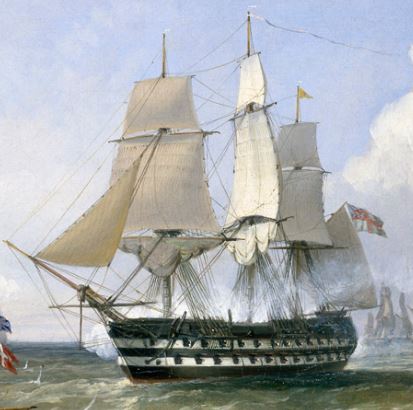
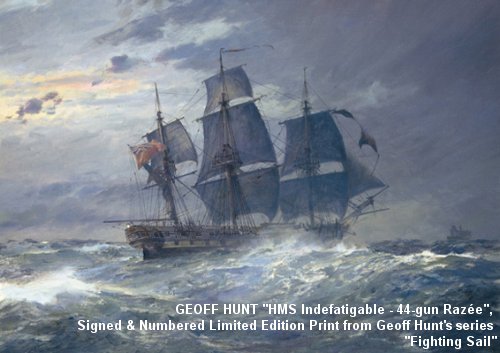
 Throughout the battle Rodd was heavily engaged with superior enemy forces, closely supporting Cochrane's attack.[5] In the summer of 1809 he was called as a witness at the Court-martial of James, Lord Gambier which assessed whether Gambier had failed to support Cochrane at the battle. Gambier was controversially cleared of all charges. [6] He left Indefatigable soon afterwards. In 1809, Rodd married Jane Rennell, daughter of Major James Rennell, a noted geographer who often assisted her father in his work. In 1814, Rodd moved to the ship of the line HMS Warrior but was placed in reserve at the end of the war in the same year.[2]
Throughout the battle Rodd was heavily engaged with superior enemy forces, closely supporting Cochrane's attack.[5] In the summer of 1809 he was called as a witness at the Court-martial of James, Lord Gambier which assessed whether Gambier had failed to support Cochrane at the battle. Gambier was controversially cleared of all charges. [6] He left Indefatigable soon afterwards. In 1809, Rodd married Jane Rennell, daughter of Major James Rennell, a noted geographer who often assisted her father in his work. In 1814, Rodd moved to the ship of the line HMS Warrior but was placed in reserve at the end of the war in the same year.[2]

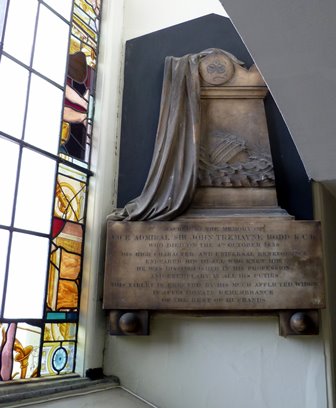
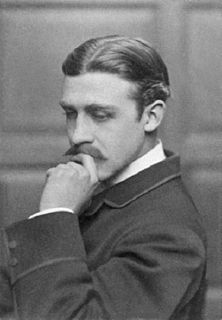

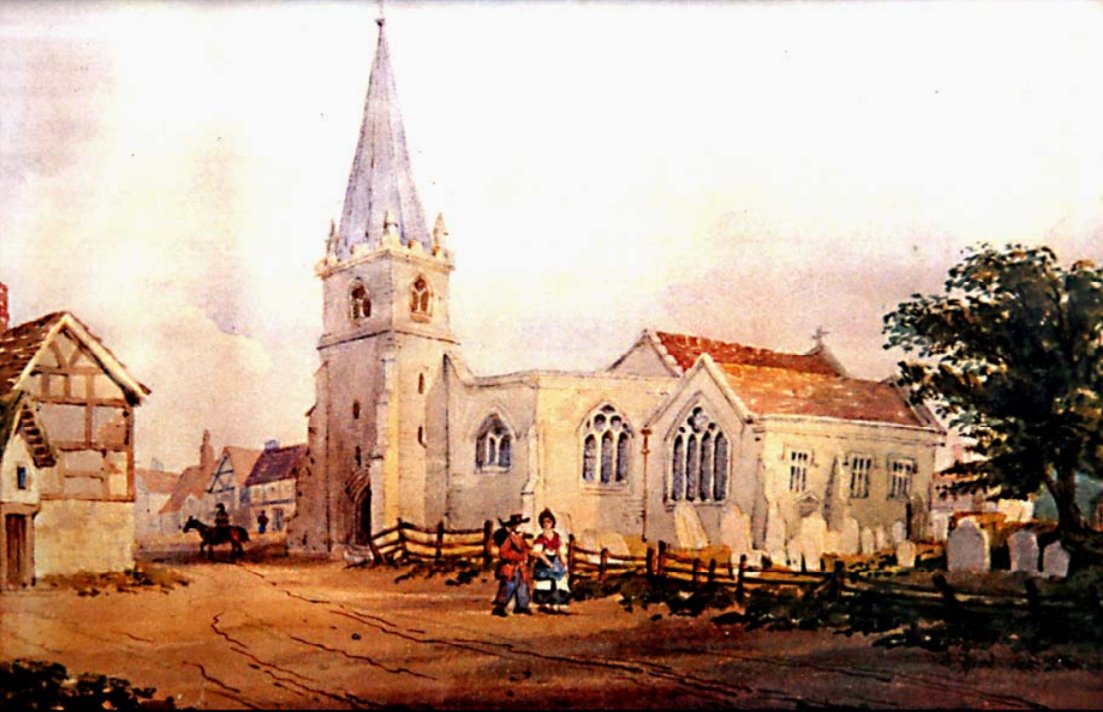 His parents were John and Mary Rodd. John, the father, was an apothecary and surgeon in Evesham and had married Mary around 1770. Mary died in 1782 having given her husband five children: Catherine Rodd (c1771), Mary Rodd (c1772), Lucy Rodd (c1773), John Rodd (bap1778-1799), Charles William Rodd (1780-1781) and Ann Rodd (1782-1782). Catherine, Mary and Lucy are mentioned in their father's will of 1804. John, Charles and Ann are recorded on the stone slab in the church, mentioned below.
His parents were John and Mary Rodd. John, the father, was an apothecary and surgeon in Evesham and had married Mary around 1770. Mary died in 1782 having given her husband five children: Catherine Rodd (c1771), Mary Rodd (c1772), Lucy Rodd (c1773), John Rodd (bap1778-1799), Charles William Rodd (1780-1781) and Ann Rodd (1782-1782). Catherine, Mary and Lucy are mentioned in their father's will of 1804. John, Charles and Ann are recorded on the stone slab in the church, mentioned below.